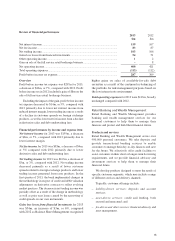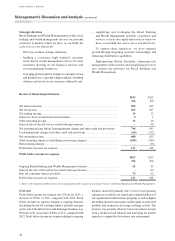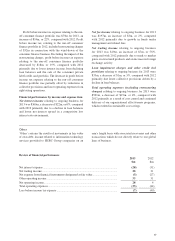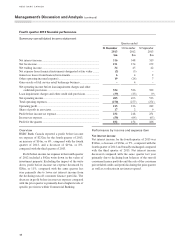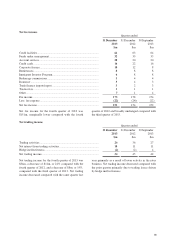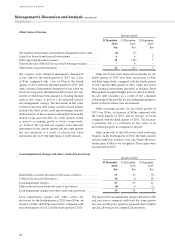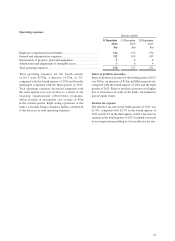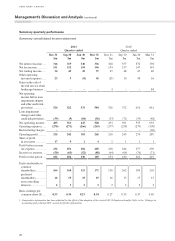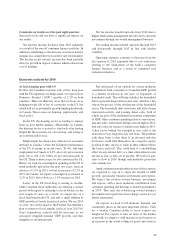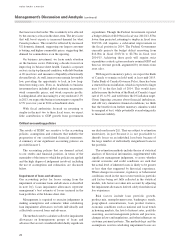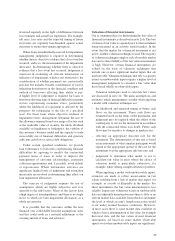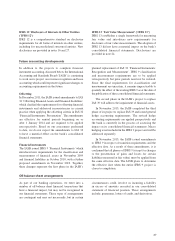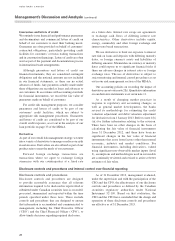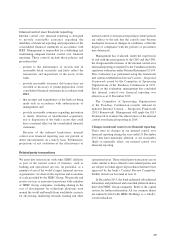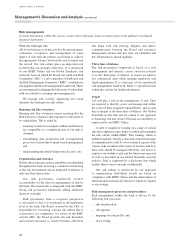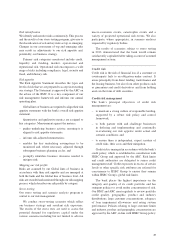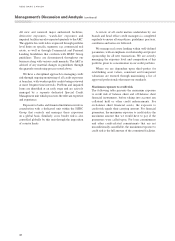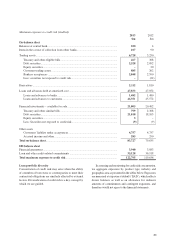HSBC 2013 Annual Report Download - page 27
Download and view the complete annual report
Please find page 27 of the 2013 HSBC annual report below. You can navigate through the pages in the report by either clicking on the pages listed below, or by using the keyword search tool below to find specific information within the annual report.25
reviewed regularly in the light of differences between
loss estimates and actual loss experience. For example,
roll rates, loss rates and the expected timing of future
recoveries are regularly benchmarked against actual
outcomes to ensure they remain appropriate.
Where loans are individually assessed for impairment,
management judgement is required in determining
whether there is objective evidence that a loss event has
occurred, and if so, the measurement of the impairment
allowance. In determining whether there is objective
evidence that a loss event has occurred, judgement is
exercised in evaluating all relevant information on
indicators of impairment, which is not restricted to the
consideration of whether payments are contractually
past-due but includes broader consideration of factors
indicating deterioration in the financial condition and
outlook of borrowers affecting their ability to pay.
A higher level of judgement is required for loans to
borrowers showing signs of financial difficulty in market
sectors experiencing economic stress, particularly
where the likelihood of repayment is affected by the
prospects for refinancing or the sale of a specified
asset. For those loans where objective evidence of
impairment exists, management determine the size of
the allowance required based on a range of factors such
as the realisable value of security, the likely dividend
available on liquidation or bankruptcy, the viability of
the customer’s business model and the capacity to trade
successfully out of financial difficulties and generate
sufficient cash flow to service debt obligations.
Under certain specified conditions, we provide
loan forbearance to borrowers experiencing financial
difficulties by agreeing to modify the contractual
payment terms of loans in order to improve the
management of customer relationships, maximize
collection opportunities and, if possible, avoid default
or repossession. Where forbearance activities are
significant, higher levels of judgement and estimation
uncertainty are involved in determining their effects on
loan impairment allowances.
The exercise of judgement requires the use of
assumptions which are highly subjective and very
sensitive to the risk factors. Many of the factors have
a high degree of interdependency and there is no single
factor to which our loan impairment allowances as a
whole are sensitive.
It is possible that the outcomes within the next
financial year could differ from the assumptions used,
and this could result in a material adjustment to the
carrying amount of loans and advances.
Valuation of financial instruments
Our accounting policy for determining the fair value of
financial instruments is described in note 2(d). The best
evidence of fair value is a quoted price for the instrument
being measured in an actively traded market. In the
event that the market for a financial instrument is not
active, another valuation technique is used. The majority
of valuation techniques employ only observable market
data and so the reliability of the fair value measurement
is high. However, certain financial instruments are
valued on the basis of valuation techniques that
include one or more significant market inputs that are
unobservable. Valuation techniques that rely to a greater
extent on unobservable inputs require a higher level of
management judgement to calculate a fair value than
those based wholly on observable inputs.
Valuation techniques used to calculate fair values
are discussed in note 24. The main assumptions and
estimates which management consider when applying
a model with valuation techniques are:
– the likelihood and expected timing of future cash
flows on the instrument. These cash flows are
estimated based on the terms of the instrument, and
judgement may be required when the ability of the
counterparty to service the instrument in accordance
with the contractual terms is in doubt. Future cash
flows may be sensitive to changes in market rates;
– selecting an appropriate discount rate for the
instrument. The determination of this rate is based
on an assessment of what a market participant would
regard as the appropriate spread of the rate for the
instrument over the appropriate risk-free rate; and
– judgement to determine what model to use to
calculate fair value in areas where the choice of
valuation model is particularly subjective, for
example, when valuing complex derivative products.
When applying a model with unobservable inputs,
estimates are made to reflect uncertainties in fair
values resulting from a lack of market data inputs, for
example, as a result of illiquidity in the market. For
these instruments, the fair value measurement is less
reliable. Inputs into valuations based on unobservable
data are inherently uncertain because there is little or no
current market data available from which to determine
the level at which an arm’s length transaction would
occur under normal business conditions. However,
in most cases there is some market data available on
which to base a determination of fair value, for example
historical data, and the fair values of most financial
instruments are based on some market observable
inputs even when unobservable inputs are significant.


